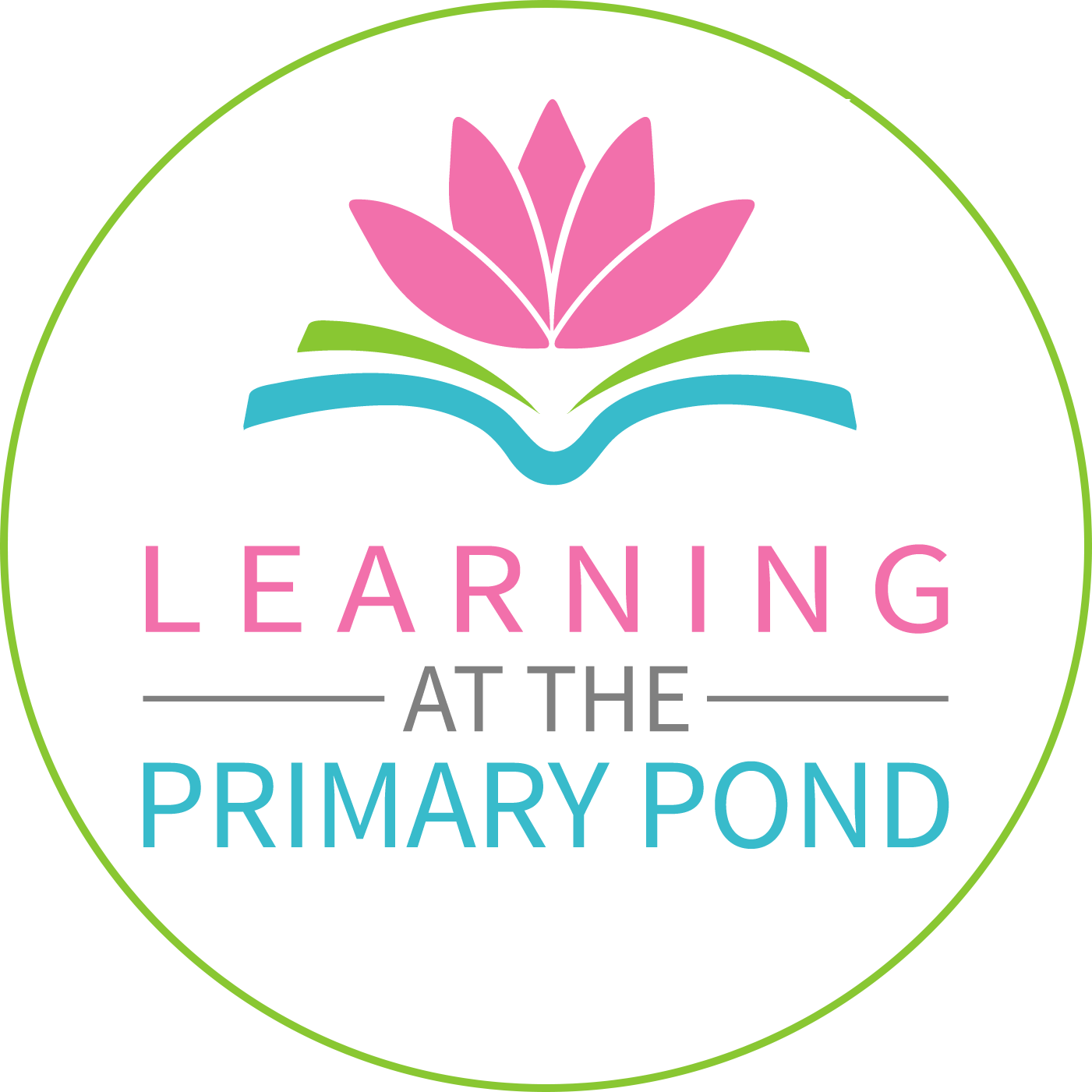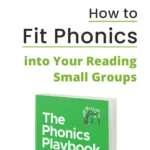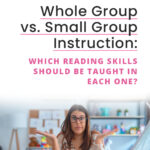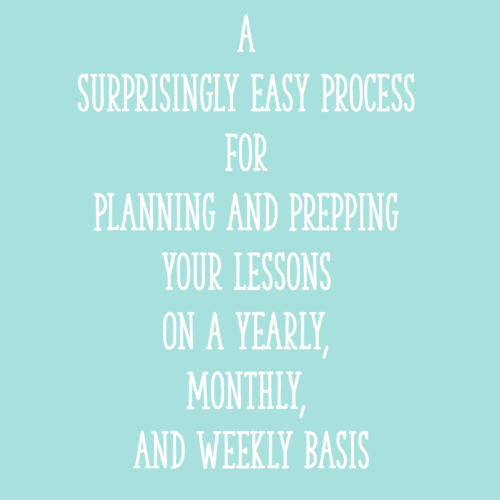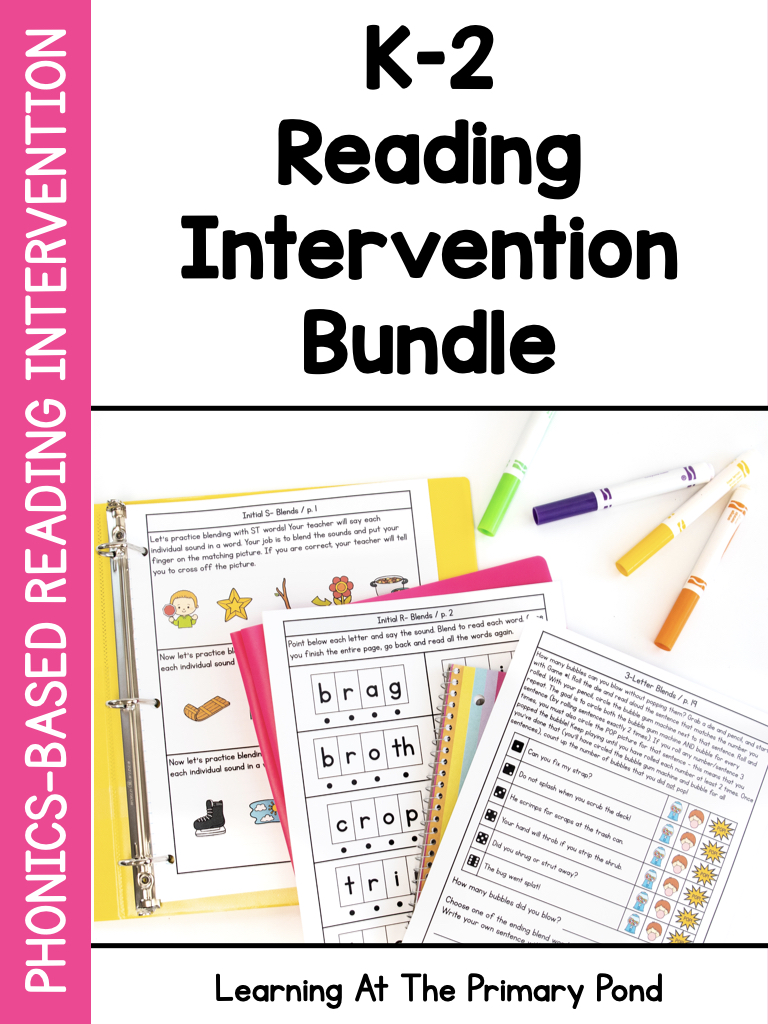Have you been teaching phonics using the same methods for years? Maybe falling back on the same differentiation strategy to meet your kids’ needs? Are you looking for new differentiation strategies to make your phonics instruction more effective? If so, you’ve come to the right place!
Effective phonics instruction focuses on teaching students the relationship between sounds and the letters that represent them. This helps them build letter-sound connections in their brains, which are essential for both reading and spelling.
Research supports using systematic (follows a set scope and sequence) and explicit (intentional teaching of the relationship between the letters and sounds) phonics instruction.
While both whole-class and small group phonics instruction are effective, the most effective method depends on the unique needs of your students. Differentiation plays a vital role in ensuring all students succeed.
By the way, if you want to learn more about what makes phonics instruction effective, I explore this topic (and much more!) in my book, The Phonics Playbook.
In this blog post, I’ll share the differentiation strategies for phonics instruction that you should ditch, and what you can do instead so that it will be more effective!

Differentiation Strategy #1: Implement Routines
Do you change up your phonics activities every week in order to differentiate? While this shows great effort on your part, changing up the activities every week can become both tiresome and time-consuming – and your time is precious! So let’s ditch this and try something different.
Instead of relying on new activities each week to differentiate, consider establishing more consistent daily routines for your phonics instruction. This predictable structure will make differentiation easier to plan and implement.
Why are routines effective?
- Routines help with behavior management.
- Following set procedures day after day helps students feel safe.
- When routines are in place, students know what to expect, and as a result they are more likely to follow classroom rules and expectations.
- Routines free up time so you can focus on differentiation!
- When you identify specific phonics routines to do each day of the week, you spend less time planning and prepping materials.
- For example, if every Monday you start your lesson with a blending drill, the only thing you need to prep for that routine is putting your cards in order!
- When routines are set for each day of the week, most of your activities will utilize the same resources which also cuts back on prep time.
- In addition, your students will know how to use all of the materials, which saves you valuable instructional time because you don’t need to reteach new activities each week!
- When you identify specific phonics routines to do each day of the week, you spend less time planning and prepping materials.
What does this look like?
Now, let’s talk about some routines that you can implement in your phonics block next year, and how your week might look.
*Note, this is just one example of a weekly routine. You can adapt it to fit your specific needs and schedule.
| Monday | Tuesday | Wednesday | Thursday | Friday |
| Blending drill warm-up | Phonological awareness drill warm-up | Blending drill warm-up | Phonological awareness drill warm-up | Review two phonics patterns taught this week |
| New phonics pattern introduction | Review new phonics pattern | New phonics pattern introduction | Review new phonics pattern | Word/phrase reading with newly taught high frequency words and phonics patterns |
| Read words with new phonics pattern | Word chains (build words with new phonics pattern using letter tiles) | Word list reading | Word sort using phonics patterns taught on days 1&3 | Sentence dictation with both phonics patterns |
| Write words with new phonics pattern (dictation) | High frequency word instruction | Sentence dictation | High frequency word instruction | Reread either decodable text for fluency practice |
| Practice reading with a decodable text | Practice reading with the same decodable text | Practice reading with a new decodable text | Practice reading with same decodable text as Wednesday | Assess new phonics pattern (through word reading or dictation) |
Differentiation can be easily integrated within these daily routines. For example, not all students need to read the same decodable text. You can differentiate the type of text you give your students in order to meet their needs.
If you are wondering how to implement some of these routines, The Phonics Playbook breaks down all of the routines listed above and includes numerous examples of each activity, as well as tips for differentiation!
Differentiation Strategy #2: Blended Model of Instruction
Have you primarily relied on either whole-class OR small group instruction for phonics? This is understandable, as both approaches can be effective.
But if you’re looking to change that up, exploring a blended model approach to phonics instruction can significantly enhance differentiation opportunities.
First, I am going to explore two models of phonics instruction with built-in differentiation. Then, I will explain how to effectively blend these two models to optimize differentiation!
Whole-class phonics instruction with built in differentiation
In whole-class phonics instruction with built in differentiation, all students receive the same phonics instruction simultaneously. Teachers follow a scope and sequence, introducing new concepts gradually throughout the year. Differentiation is then integrated into the daily activities.
For example, during a word sort activity, pair students who are struggling with the new concept with those who have demonstrated mastery.
Or, you may have a group of students who struggle to complete sentence dictation. To differentiate for these students, consider providing sentence frames with some words already filled in. This allows them to focus on spelling the target phonics patterns without getting overwhelmed by the whole sentence.
Typically in this model, there is also time in the literacy block schedule for further small group instruction where more differentiation can occur.
Also, you can check out this blog post if you are looking to read more about whole-class phonics instruction!
Daily differentiated phonics-focused small groups
In daily differentiated phonics-focused small groups, students receive most of their phonics instruction within a small group. While all students follow the same overall scope and sequence, they progress at their own pace. Depending on individual needs, different groups focus on different phonics skills at any given time.
This model allows for high levels of differentiation, allowing for individualized instruction based on each student’s current level of understanding. It is important to frequently monitor progress in this model and change groups if necessary so that students are always getting exactly what they need.
If you want to learn more, read this blog post to learn more about how to make phonics-focused small groups more effective.
Or, if you purchase a copy of the Phonics Playbook, I go into each of these models in detail AND provide you with detailed samples of daily schedules for each model across different grade levels!
Blended model
Now, let’s talk about how to blend these two models so that you’re ready to try this!
There are many ways to blend whole-class and small group instruction to maximize differentiation. The amount of time you have for literacy instruction will significantly influence how you integrate these models.
The simplest way to blend these two models is to begin your literacy block with whole-class instruction, covering the entire daily routine outlined earlier. Dedicate the remaining time to meeting with one small group a day to address individual needs and reinforce skills.
Another way to blend the two models is to begin with whole-class instruction for the warm-up, new concept introduction, and high-frequency word instruction. Transition to small group instruction for the remaining activities, allowing you to differentiate each component depending on students’ needs. In this model, you can likely meet with two to three groups per day, depending on the length of your literacy block!
A third way to blend these models is to start the school year off with whole-class instruction. During these six weeks, focus on reviewing prior learning (or introducing foundational concepts for kindergarteners). After six weeks, re-evaluate. Does whole-class instruction seem to meet your students’ needs, or do you need to incorporate some small group instruction? If so, change it up!
Conduct quick, formative assessments on a frequent basis (weekly or bi-weekly), and you’ll know if what you are doing isn’t working. It’s easy to collect data too when you implement consistent routines each week, because it just becomes another part of your weekly routine!
You can also change models other times throughout the year. Being flexible and adapting based on your students’ needs is key to providing high quality differentiated phonics instruction.
Differentiation Strategy #3: Differentiate Independent Work
And last but not least, ditch having all students complete the same worksheets and activities for independent work. Differentiating students’ independent work will extend their learning and reinforce skills you’ve taught.
Differentiating independent work also allows your students to complete this work without your support, freeing you up to support more students during small group instruction.
Before you begin differentiating student work, you’ll need to establish some routines (do you see a trend here!?) for organizing materials.
When I was a classroom teacher, I had an independent work folder for each student. Each week, I’d add various worksheets or decodable texts that we used during small group instruction to their folders. I also would sometimes pre-fill their folders with work to complete.
*Tip – when pre-filling folders, you likely have students that can complete the same worksheets, meaning you don’t need to find a different worksheet for every student!
Teach students how to complete independent work effectively by modeling expectations and reviewing routines daily. After a few weeks, students will become proficient in managing their independent work time.
You can also integrate games and activities into independent work. Teach certain games or activities during whole-class instruction, and then allow students to play them independently. Or, use small group time to introduce new games or activities that students can then practice independently.
Examples of differentiated independent work
There are numerous ways to differentiate independent work to meet the diverse needs of your students. Ensure that independent work aligns with both students’ needs and your overall phonics scope and sequence.
Here are some examples of independent work that can be differentiated:
- Phonological Awareness Sound Sorts: Phonological awareness sound sorts involve students determining whether two pictures have the same beginning, middle, or ending sound. Students sort the pictures accordingly. Begin with beginning sound sorts for emerging readers, and gradually progress to more complex sorts for advanced learners.

- Building/Writing Words: Having students spell words with target phonics patterns is a great independent activity, and it’s easy to differentiate! Say, Tap, Write activities are fun and effective. Provide all students with the same recording sheet, but provide different pictures depending on student needs for them to say, tap, and write the words.

- Partner/Small Group Games: Many phonics games can be adapted for differentiation. For example, in a game where students practice reading words with a target phonics skill, all students can play the same game, but the game boards can have different words on them.

- Decodable Texts: Decodable texts are another resource that is easy to differentiate! Provide each group with a decodable text about the same topic, but with varying levels of difficulty based on the specific phonics patterns included.

My Kindergarten and First & Second Grade Literacy Club Memberships offer a wealth of ready-made differentiated activities that require minimal preparation. Literacy Club members also receive brand new materials for teaching literacy every single month!
Conclusion
As summer approaches, it’s an excellent time to reflect on your past instructional practices and plan for the upcoming school year.
The Phonics Playbook is packed with research-backed differentiation strategies for K-3 teachers!

It also includes:
- guidance on choosing effective assessments in order to make decisions for differentiation,
- strategies for creating differentiated reading groups,
- in-depth exploration of phonics instruction models, including a third model not discussed in this post,
- advice on adapting instructional models based on your students’ specific needs,
- strategies for serving diverse learners, including beginning kindergarteners and English Language Learners, and
- more examples of differentiated independent phonics activities.
The Phonics Playbook is the perfect resource to guide your differentiation efforts and set your students up for reading success.
Plus, it makes for a great book for summer reading! Grab your copy here!
Happy teaching!
PS – As you prepare for teaching phonics next school year, be sure to check out this recording of a recent training I held: 10 Strategies to Support Students Who Struggle with Decoding!
